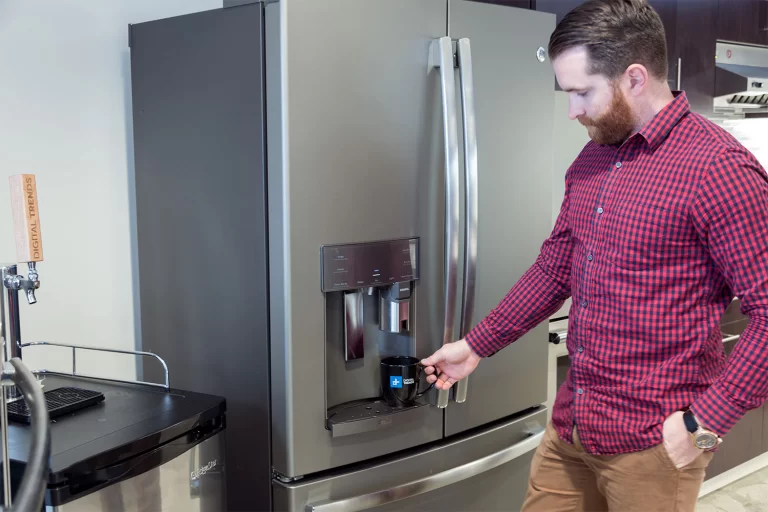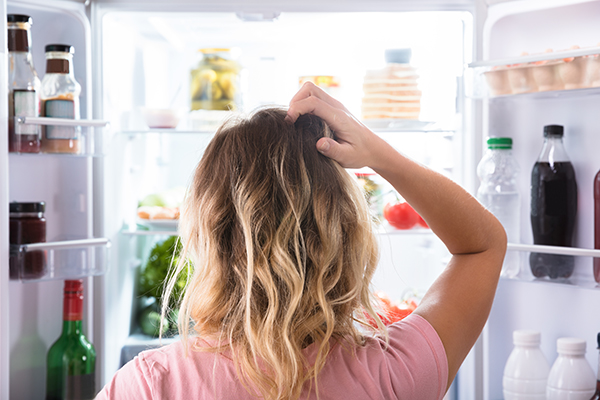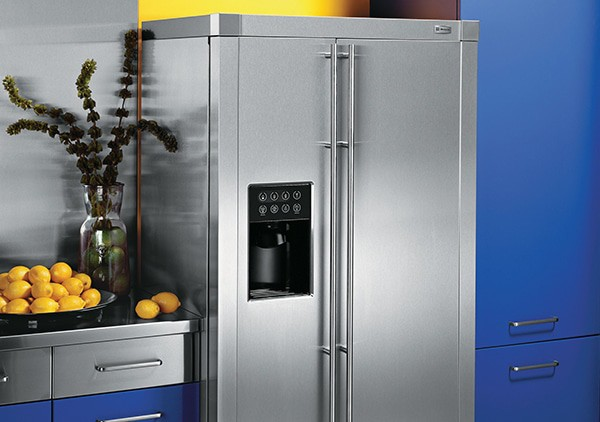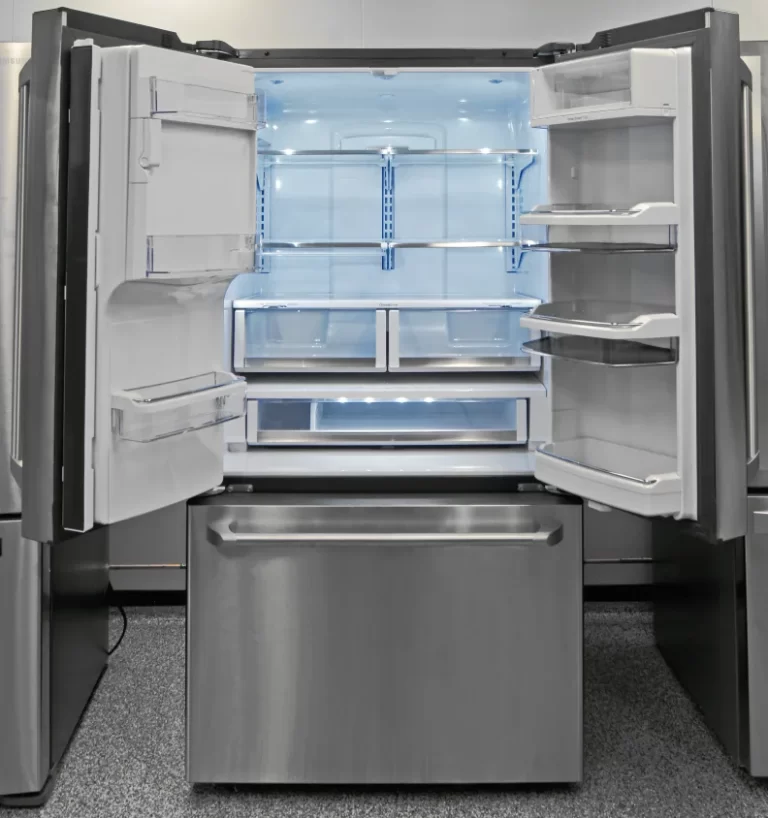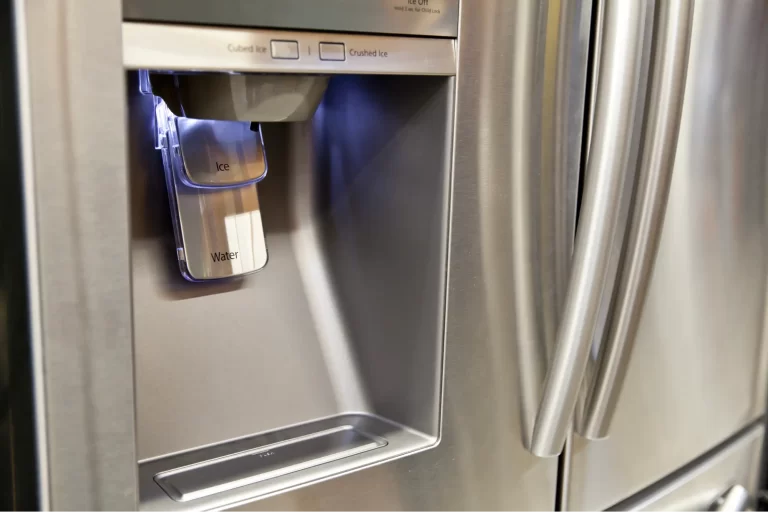The Samsung Bespoke Refrigerator, known for its advanced features and customizable design, is a popular choice among homeowners. But like any appliance, it can encounter some issues. This in-depth guide will provide practical solutions to common Samsung Bespoke refrigerator problems, helping you maintain your fridge’s peak performance.
Samsung Bespoke Refrigerator vs Other Brands

Although these problems might seem daunting, it’s crucial to remember that they are not exclusive to Samsung Bespoke Refrigerators. According to a 2022 Consumer Reports survey, 31% of refrigerator owners reported at least one significant problem in the first four years of use, regardless of the brand. With that in mind, Samsung Bespoke Refrigerators still have their distinct advantages over other brands, particularly in design customization and smart technology.
Let’s take a closer look at the specific issues users often encounter with their Samsung Bespoke Refrigerators.
Check Out: Samsung refrigerator ice maker problems
10 Common Samsung bespoke refrigerator problems with Fixes
1. Inconsistent Temperature
Issue: The refrigerator or freezer might not be maintaining the desired temperature. This could manifest in various ways, such as the refrigerator section being too warm, leading to food spoilage, or the freezer section not being cold enough, leading to inadequate freezing. Sometimes, the opposite could also occur, with the refrigerator freezing food.
Solution:
Step 1: Check the internal temperature settings of your refrigerator and freezer to ensure they are set to the recommended levels.
Step 2: Make sure that the refrigerator is not overstuffed, and that there is enough room for air to circulate.
Step 3: Check for any blocked vents and remove obstructions.
Step 4: Inspect the door seals for any damages. Damaged seals can allow cold air to escape, affecting the temperature inside.
Step 5: If the above steps don’t resolve the issue, it’s likely a problem with the thermostat or sensors. In this case, contact a professional technician for repair.
2. Excessive Noise
Issue: The refrigerator makes unusual noises such as buzzing, humming, or rattling. This can be normal to some extent but excessive noise can be indicative of an underlying problem.
Solution:
Step 1: Ensure the refrigerator is level. Sometimes an uneven position can cause vibrations leading to noise.
Step 2: Remove any items on top of the refrigerator as they might be causing the noise during the fridge’s normal operation.
Step 3: Check the back of the refrigerator and ensure that the coils are not touching the wall or each other.
Step 4: If noise continues, it could be a sign of a problem with the compressor, fans, or another component. Contact a technician for a thorough inspection and repair.
3. Ice Maker Problems
Issue: Ice maker not producing ice, producing ice too slowly, or making small or misshapen ice cubes. This can be caused by various factors including temperature settings, water supply issues, or problems with the ice-making mechanism itself.
Solution:
Step 1: Check the water supply line for kinks or blockages.
Step 2: Make sure the water filter is not clogged and replace it if necessary.
Step 3: Check the freezer temperature. It should be set to 0 degrees Fahrenheit or -18 degrees Celsius for optimal ice production.
Step 4: Check the ice maker’s on/off switch to ensure it’s turned on.
Step 5: If ice production does not resume, it’s possible that there’s a mechanical or electrical issue. Consult a technician for repair.
4. Door Seal Problems
Issue: The door seals, also known as gaskets, might be damaged or worn out, causing cold air to escape and warm air to seep in. This not only affects the refrigerator’s cooling efficiency but can also lead to temperature inconsistencies and increased energy consumption.
Solution:
Step 1: Inspect the door seals for any visible damages like cracks or tears.
Step 2: Perform the dollar bill test: close the door on a dollar bill and if you can pull it out easily, the seals might be loose.
Step 3: Clean the seals with warm water and mild soap, as grime buildup can affect the seal efficiency.
Step 4: If the seals are damaged or loose, they need to be replaced. You can do it yourself if you’re comfortable with DIY tasks or contact a technician.
5. Electronic Control Problems
Issue: The electronic control panel might become unresponsive or malfunction, resulting in issues like temperature setting problems, display errors, or inability to use certain features.
Solution:
Step 1: Try a simple reset by unplugging the refrigerator from the power source, waiting a few minutes, and plugging it back in.
Step 2: If the panel is not responsive at all, it might be a problem with the control board or a panel failure. You would need to call a technician for repair in this case.
6. Water Dispenser Not Working
Issue: The water dispenser might stop dispensing water. This could be due to problems with the water supply line, a clogged water filter, or an issue with the dispenser mechanism itself.
Solution:
Step 1: Check the water supply line to ensure it’s properly connected and there are no kinks or leaks.
Step 2: Try replacing the water filter as a clogged filter can obstruct the water flow.
Step 3: If the water dispenser still doesn’t work, contact a technician as the issue might be mechanical or electrical.
7. Fridge Light Not Working
Issue: The light inside the fridge doesn’t turn on. This could be due to a burnt-out bulb or an issue with the door switch that controls the light.
Solution:
Step 1: Replace the bulb to see if that resolves the issue.
Step 2: Check the door switch, typically located near the top or bottom of the door frame. Press it manually to see if the light comes on.
Step 3: If neither of these steps resolves the issue, it could be an electrical problem. Contact a technician for assistance.
I’ll stop here for now. Let me know if you’d like me to continue with the remaining common issues.
Learn: Samsung refrigerator noise stops when door open
8. Refrigerator Overcooling
Issue: The refrigerator might be cooling too much, causing food and beverages to freeze even in the refrigerator section.
Solution:
Step 1: Check the temperature settings for both the refrigerator and freezer sections. They may be set too low.
Step 2: Make sure the vents inside the refrigerator are not blocked, allowing for proper air circulation.
Step 3: If adjusting the settings and ensuring proper circulation doesn’t help, the issue might lie with the thermostat or temperature sensor. In such a case, you’d need to contact a technician for a repair.
9. Refrigerator Is Leaking Water

Issue: Water might be pooling under or around your refrigerator, possibly due to a blocked defrost drain or a clogged or frozen water supply line.
Solution:
Step 1: Check the defrost drain for blockages. It can be cleared with warm water and a small tool like a turkey baster.
Step 2: Inspect the water supply line for leaks or frost. A frozen line can be thawed using a hairdryer, while a leaking one should be replaced.
Step 3: If the leakage continues, contact a professional to take a look as the issue could be a malfunctioning water inlet valve or other internal components.
10. Foul Odor Inside the Refrigerator
Issue: There may be a persistent bad smell inside your refrigerator, which could be due to spoiled food, mildew growth, or even a water pan that needs cleaning.
Solution:
Step 1: Remove all the contents and clean the interior with a mild cleaner. Make sure to clean the drawers and shelves separately too.
Step 2: Check the drip pan (if accessible) for any spilled food or water. Clean it thoroughly.
Step 3: Use baking soda or specially designed refrigerator deodorizers to help absorb any remaining odors.
Step 4: If the smell persists, it could be due to a more severe issue, like a coolant leak. In such cases, it’s best to call a professional for help.
Preventive Measures for Avoiding Samsung Bespoke Issues
Prevention is always better than cure. Taking good care of your refrigerator can prevent many of the common problems.
- Routine Maintenance: Clean the refrigerator regularly, including the door seals, to ensure maximum efficiency.
- Proper Usage: Avoid overloading the refrigerator to ensure optimal air circulation. Also, ensure the doors are closed properly to maintain the temperature.
- Regular Inspection: Regularly inspect the fridge for potential issues such as frost build-up, unusual noises, or malfunctioning controls. Early detection can prevent bigger problems down the line.
When to Contact Samsung Customer Service
While troubleshooting can resolve minor issues, some problems necessitate professional help. When facing persistent temperature issues, unresolvable noise problems, or complex electronic issues, it’s best to call Samsung Customer Service.
Samsung offers a one-year warranty on all refrigerators, with extended 5-year coverage on certain components. This coverage can be very useful when dealing with complex problems that require professional expertise.
FAQs
How can I improve the efficiency of my Samsung Bespoke Refrigerator?
You can improve your refrigerator’s efficiency by keeping the temperature between 37 and 40 degrees Fahrenheit in the fridge and 0 degrees Fahrenheit in the freezer, cleaning the condenser coils twice a year, ensuring the door seals are airtight, and not keeping the fridge door open for too long or too frequently.
How can I reduce frost build-up in my Samsung Bespoke Refrigerator’s freezer?
To minimize frost build-up, avoid leaving the freezer door open for extended periods, wrap or properly seal food before storing, and ensure your freezer isn’t packed too tightly, allowing for better air circulation. If the problem persists, you may need to check the door seals or the auto-defrost feature.
Why is my Samsung Bespoke Refrigerator door not closing properly?
If your refrigerator door isn’t closing properly, first check for any food items that may be blocking the door. If there are no obstructions, inspect the door seals for any signs of wear or damage. If the seals look worn, they may need to be replaced. A fridge that isn’t level can also prevent the door from closing properly.
What should I do if my Samsung Bespoke Refrigerator is not dispensing water?
Ensure that your refrigerator is connected to a water supply and check that the water supply valve is fully open. You should also check to make sure the water filter is not clogged or due for replacement. If it still doesn’t dispense water, it may need to be serviced by a technician.
My Samsung Bespoke Refrigerator is giving off a strange odor, what could be causing this?
Unpleasant odors can be due to spoiled food, or residue left from spills. A thorough cleaning of your fridge’s interior should eliminate any odors. If the smell persists after cleaning, it might be a more serious problem, such as a coolant leak, and you should seek professional help.
Conclusion
Keeping your Samsung Bespoke refrigerator in top-notch condition doesn’t have to be daunting. With our comprehensive guide, you’ll be well-equipped to tackle any common refrigerator problems. Don’t let minor issues compromise your appliance’s performance – empower yourself with knowledge and ensure your Samsung Bespoke refrigerator remains as reliable as the day you bought it.

